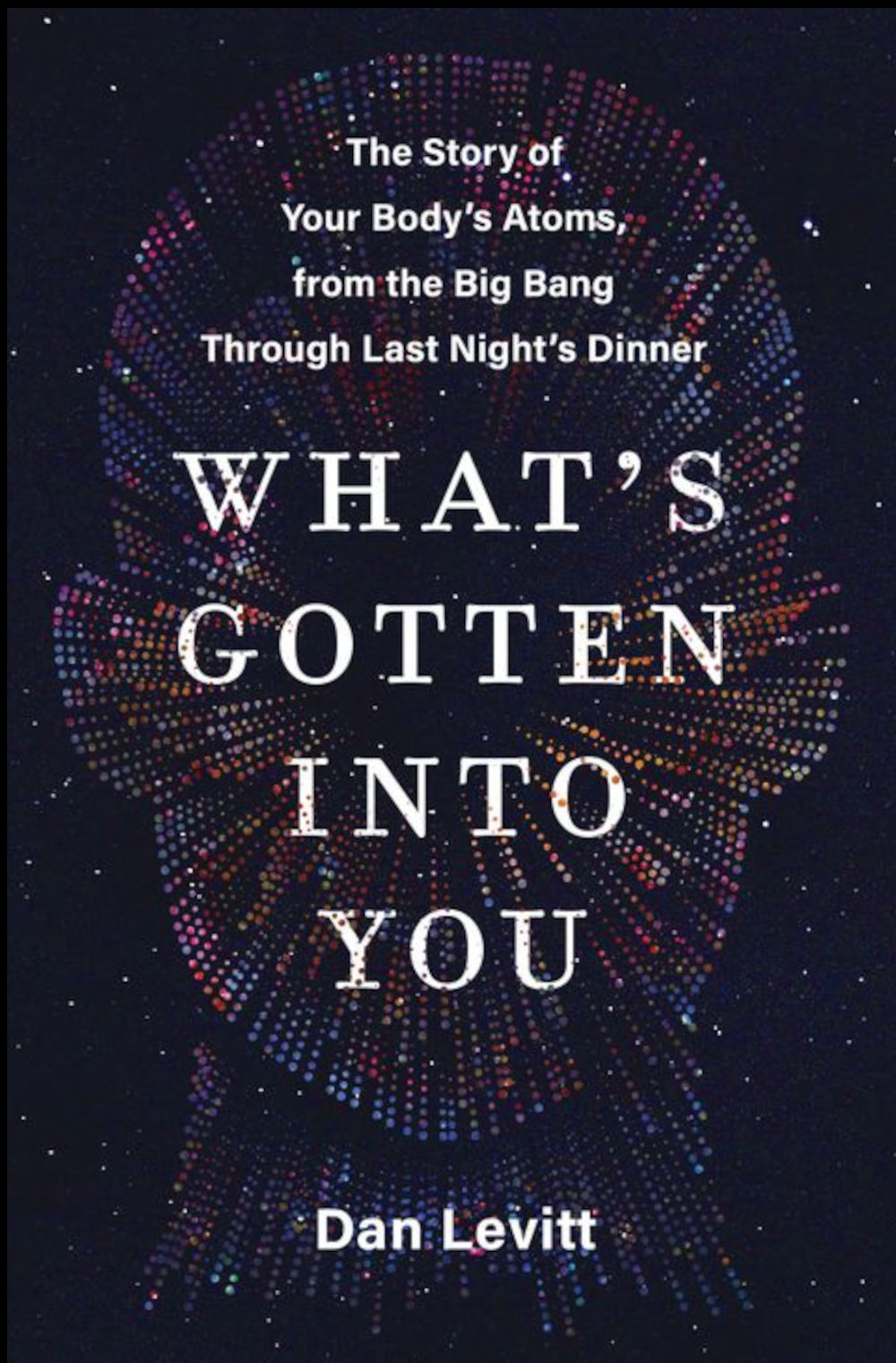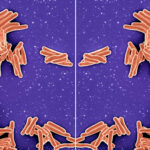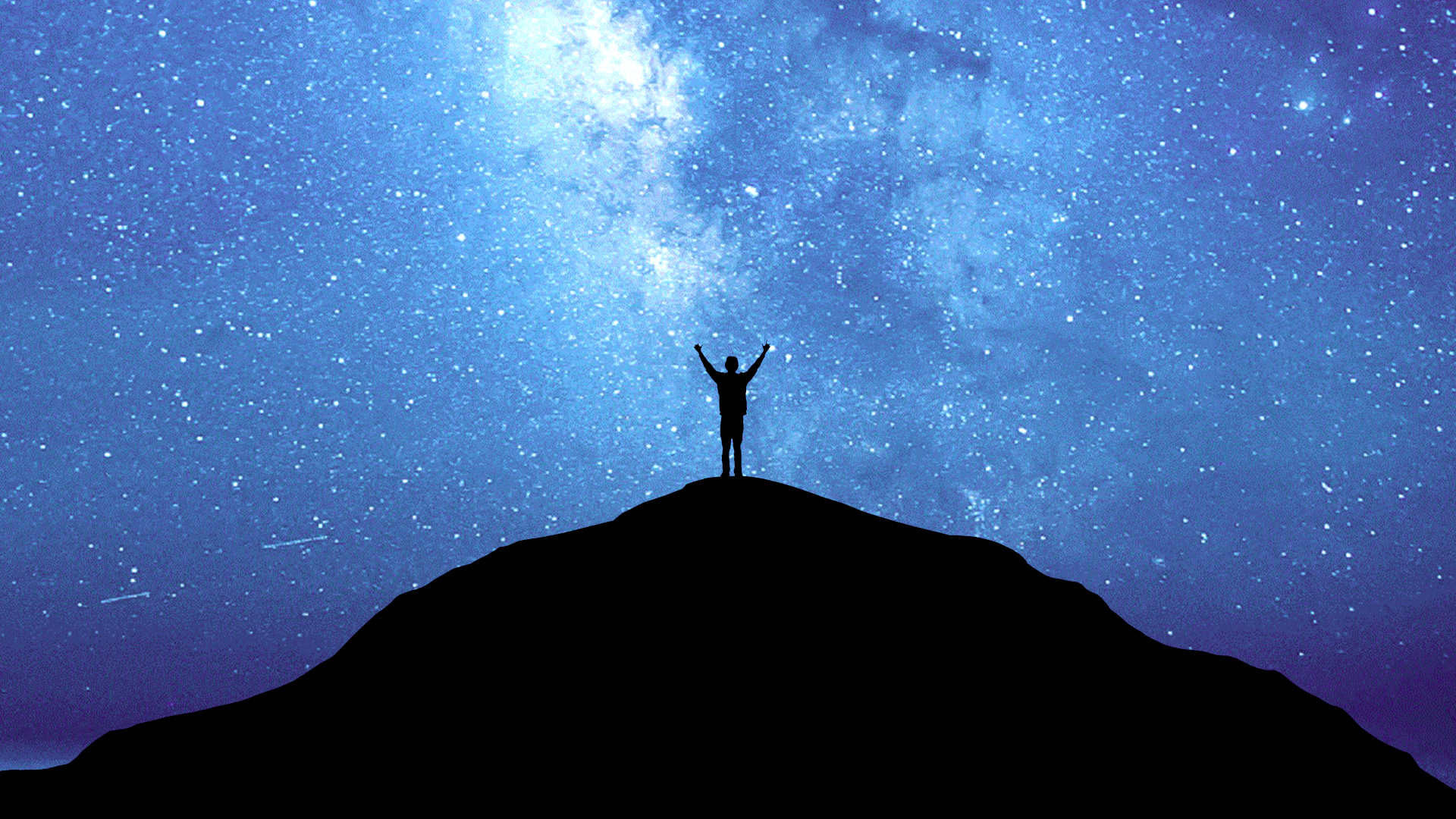Every single part of every single human being on our planet is made up of atoms that, originally, exploded into the universe in the Big Bang. How did they get from there to here?
This is the mind-binding question explored in Dan Levitt’s “What’s Gotten Into You: The Story of Your Body’s Atoms, from the Big Bang Through Last Night’s Dinner.” Levitt, a noted science journalist and documentarian, hatched the idea after his daughter decided to become a vegetarian and Levitt recalled his grandfather’s caution: It’s unhealthy to not eat meat. Levitt knew that this advice was false, but it got him thinking: what are we made of, at the fundamental level? Where did the physical matter that makes up our bodies come from, how did it get here, and how did it evolve into organic material and eventually animate life? “I realized that I knew less about what I was composed of than I knew about what lay inside my computer or my car,” Levitt writes.

BOOK REVIEW — “What’s Gotten Into You: The Story of Your Body’s Atoms, from the Big Bang Through Last Night’s Dinner,” by Dan Levitt (Harper, 400 pages).
At this point, Carl Sagan’s statement that we are all made of star stuff can seem banal. But with Levitt’s meticulous guidance and palpable sense of wonder, this topic takes on the urgency of a great adventure story. Levitt divides his tale into four sections, each preceded with an epigraph that begins “In which…” like an old-fashioned novel. Over the course of these four parts, the story of our atoms — and us — unfolds. It all started with the “primeval atom” that burst into the Big Bang more than 13 billion years ago, flinging electrons, gluons, and quarks into the universe. (We are each made of around 30 octillion of those electrons, and even more quarks and gluons.) These particles quickly combined into hydrogen and other simple elements. As the millennia passed, heat and pressure in very large stars created carbon, changing them to red giants in the process, and ultimately concocting the heavier elements up to iron. When those red giants died in exploding supernovae, the rest of the elements were born.
These atoms streamed through space, heading toward the empty area where our solar system now spins, or, as Levitt would have it, “at last they were on their remarkable journeys to becoming you.” Particles, pebbles, and rocks slammed into each other, finally resulting in the huge orb that became Earth. Water arrived on our newly birthed planet, some of it condensed on the dust that first created Earth and some from comets and asteroids.
And then, the great transition from inorganic to organic materials. Whether our organic molecules floated in on space dust or evolved in deep-sea vents (or some other possibility — the jury’s still out), we can say for sure that all the life we know today evolved from a common ancestor. Once the organic molecules were off to the races, cyanobacteria started photosynthesizing, followed sometime later by plants, turning “flavorless air and water into sweet molecules that store energy and can be used to make the building blocks of life.” Once plants harvested the energy from the sun needed to create proteins, fats, carbohydrates, vitamins, and minerals, the “ancient code” of RNA and DNA entered the picture, with all the information needed to tell our cells how to become us. And now here we are.
Alongside this epic story of how our atoms journeyed from the beginning of time into our bodies, Levitt also tells another, parallel story: how scientists discovered that narrative. In addition to a cosmos-spanning origin story, this book is also both an homage to researchers across the centuries and a reminder of the pitfalls embedded in the scientific research process.
Many components of our atoms’ story were dismissed at first; even Einstein had trouble believing in the Big Bang. Levitt sees a reason for this: In his introduction, he lays out six common errors that blind scientists, including the “Too Weird to Be True” bias and the “World’s Greatest Expert Must be Correct” bias. He references these biases throughout the book as he explores the numerous stops, starts, happy and unhappy accidents, rivalries, and controversies along the way to nailing down our origin story.
From Soviet Moscow to Enlightenment-era England to Berkeley in the 1960s, we see research dismissed, new theories ridiculed, outsiders going against the grain. We see the scientific establishment overtly criticizing ideas that turned out to be true, such as in 1880s Berlin when a plant scientist proposed that fungus helps trees pull minerals out of the ground and his critics called his idea “calculated to try our patience and credulity.”
All of this might sound rather dense: a history of the entire universe leading up to this point, plus the scientific advances that helped researchers discover this story. It might sound abstract, or irrelevant. But Levitt’s work is brilliant popular science in that he renders this tale deeply accessible. He explains concepts using layperson’s analogies, as when he compares the likelihood of nine planets forming from colliding stars to the likelihood of you putting “wet laundry in a dryer and then opened it to find your clothes not just dry, but neatly folded.”
He is a master at bringing scenes to life, from the smell of orange trees wafting through the streets of Pasadena as researchers indoors experimented on the origins of carbon to the tubeworms and giant pink fish swanning past the portholes of a submersible when Jack Corliss and his team realized that the deep sea was not a desert after all.
Levitt also keeps his narrative alive through sheer sense of wonder. There aren’t many personal anecdotes in here, but he routinely reminds us that this story is personal to all of us, pointing out at each stage that this is a tale of the very molecules in my fingers as I type this review and in your eyeballs as you read it. In sentences here and there, Levitt’s glee and awe shine through; he muses, “Who knew that we had so much in common with meteorites?” and reveals that he likes to believe that we are all descended from sponges, so that every night when he takes a bath, he can savor how far we’ve come.
Of course, there is one last big question that scientists still haven’t answered: We now know (or think we know) about the origin of the particles that became hydrogen and carbon and oxygen, the spark that created organic materials, the photosynthesis that terraformed Earth. But, as Levitt explores in his conclusion, we still can’t explain the spark of consciousness: “We now know what’s gotten into us, but what, ultimately, are we?”
Is there some as-of-yet undiscovered secret? Or can known physical processes explain intelligence, self-awareness, humanity? Levitt’s conclusion invites us to feel both humbled and excited by these questions. For him, science does not ask us to close the door on wonder and mystery, but to embrace them. Nothing encapsulates this worldview so well as his final, heartrending anecdote: a memory of him holding the box containing the ashes that were once his mother, who died while he was writing this book. “It represented only a few percent of the atoms that made her so lovable. Nonetheless, I felt grateful to them,” he writes, adding, “To retrace the journey of our atoms is to appreciate the world anew.”
Emily Cataneo is a writer and journalist from New England whose work has appeared in Slate, NPR, the Baffler, and Atlas Obscura, among other publications.











Comments are automatically closed one year after article publication. Archived comments are below.
That last para totally made me want to buy this book!